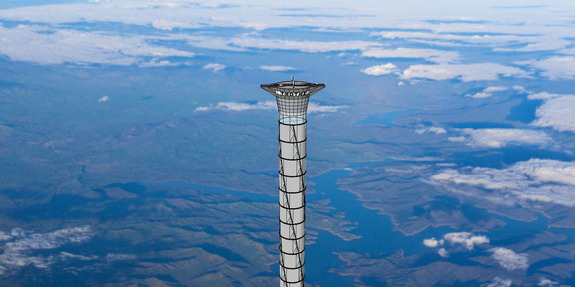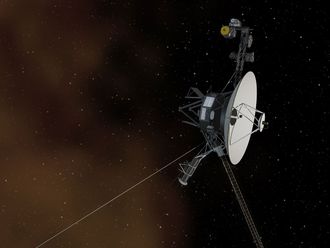
Toronto: A Canadian firm has been granted a US patent to build the world’s first space elevator — 20 times the height of the world’s tallest building Burj Khalifa — that will also have a tower that assists spacecraft to land and take off.
Ontario-based Thoth Technology has already outlined plans for the elevator that will help save enormous amount of fuel and money that go into launching rockets into orbit, Daily Mail reported.
The company will build a free-standing tower, reaching 20km above the planet’s surface.
“Astronauts would ascend 20km by an electric elevator. From the top of the tower, space planes will launch in a single stage to orbit, returning to the top of the tower for refuelling and reflight,” its inventor Dr Brendan Quine was quoted as saying.
The elevator will also be used for wind-energy generation and communications.
According to Caroline Roberts, president and chief executive officer of Thoth, the space tower will also include self-landing rocket technologies to herald a new era of space transportation.
“Landing on a barge at sea level is a great demonstration, but landing at 20km above sea level will make space flight more like taking a passenger jet,” he was quoted as saying.
A commercial spacecraft launch pad and runway would sit atop the 12-mile-high inflatable space elevator concept patented by the Canadian company Thoth Technology Inc. The concept would allow cheaper access to space, the company says.
The Thoth design reportedly uses inflatable sections and flywheels to provide dynamic stability.
The design seeks to get around the complication of geostationary orbit by limiting its height to just 20km instead of the full 100km, considered the end of our atmosphere and the beginning of space.
'Self supporting' lift
“The present invention is a self-supporting space elevator tower for the delivery of payloads to at least one platform or pod above the surface of the Earth for the purposes of space launch,” the patent document read.
“The space elevator tower may also be used to deliver equipment, personnel and other objects or people to at least one platform or pod above the surface of the Earth for the purpose of scientific research, communications and tourism,” it added.
The idea of a space elevator was first proposed by Russian scientist Konstantin Tsiolkovsky in 1895.












